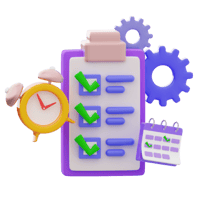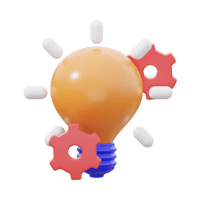Practical Applications of AI Automation Across Some Industries AI automation is revolutionizing...
What is AI Automation and how it differs from traditional automation
Definition of AI Automation
AI automation represents the use of artificial intelligence technologies to automate tasks that typically require human intelligence, such as decision-making, pattern recognition, and data analysis. It stands in contrast to traditional automation, which relies on pre-defined rules and processes dictated by human operators.
So what exactly is different between traditional and AI automation?
Traditional automation is primarily based on pre-set instructions and rules that guide machines or processes, acting like a sophisticated script that executes tasks repetitively without deviation. In contrast, AI automation leverages advanced technologies such as machine learning and neural networks which enable systems to learn from data, adapt to new information, and make autonomous decisions. Where traditional automation might be likened to following a recipe exactly as written, AI automation is more akin to a chef who can improvise based on the ingredients available and the preferences of their guests, offering flexibility and customization. This distinction is significant because AI systems can manage more complex and unpredictable scenarios, freeing human workers from routine tasks and allowing them to focus on strategic planning and creative problem-solving. Additionally, AI automation can improve over time as it encounters more data and scenarios, continuously enhancing its performance, something that traditional automation lacks since it requires manual updates and oversight to evolve. For businesses, recognizing the differences between these automation types is crucial in choosing and implementing appropriate technologies that align with their objectives and operational needs.
At its core, AI automation involves training systems with vast amounts of data, allowing them to learn and improve their performance over time without human intervention. These systems use complex algorithms to simulate human cognitive functions, such as learning from experiences, understanding natural language, and recognizing objects or behaviors. Once trained, AI models can autonomously manage tasks, ranging from mundane data entry to sophisticated analysis and decision-making, thereby reducing the need for direct human oversight. This process is facilitated by continuous data input which keeps the system updated with real-world changes and trends. By dynamically adjusting to new information, AI automation provides organizations with a powerful tool to enhance operational agility, ensuring that their processes remain efficient and competitive amidst rapid market evolutions.
How does it benefit your business?
AI automation brings a multitude of benefits to business processes, significantly enhancing productivity and efficiency. By relieving human workers from repetitive, time-consuming tasks, organizations can achieve higher output rates with fewer errors, leading to more streamlined operations. One notable advantage is the reduction in operational costs; as AI-driven systems can operate continuously without the need for breaks or shifts, businesses can optimize their resource allocation and reduce dependency on manual labor. Furthermore, AI automation plays a crucial role in improving decision-making and customer experience. With the ability to process vast amounts of data swiftly, AI systems can provide insightful analytics and predictive modelling, enabling businesses to make informed decisions that cater to evolving customer needs. Enhanced decision-making capabilities also allow for more personalized customer interactions, elevating overall satisfaction and loyalty. These benefits combine to create a competitive edge in the market, ensuring businesses remain agile and responsive in a rapidly changing environment.


